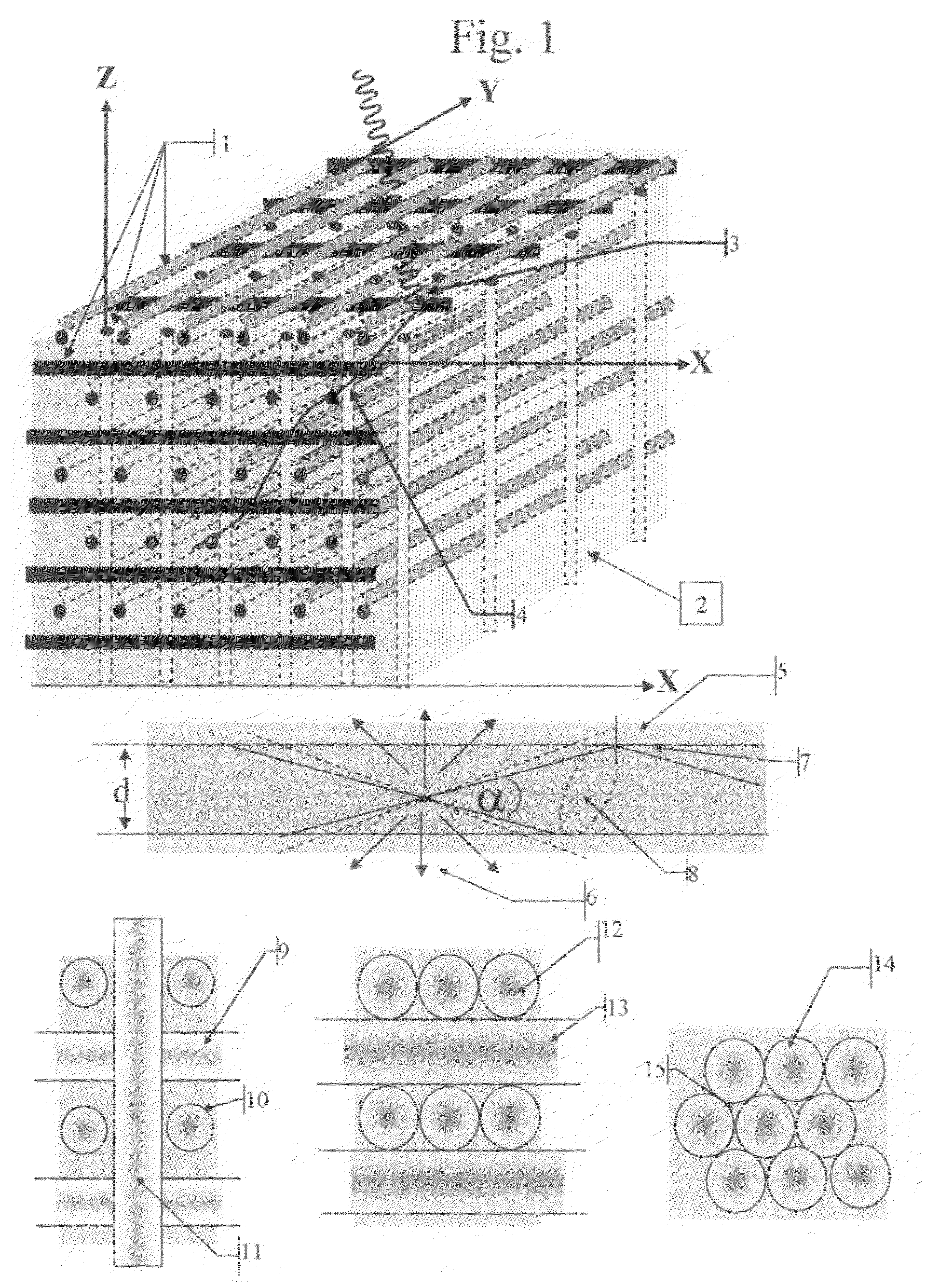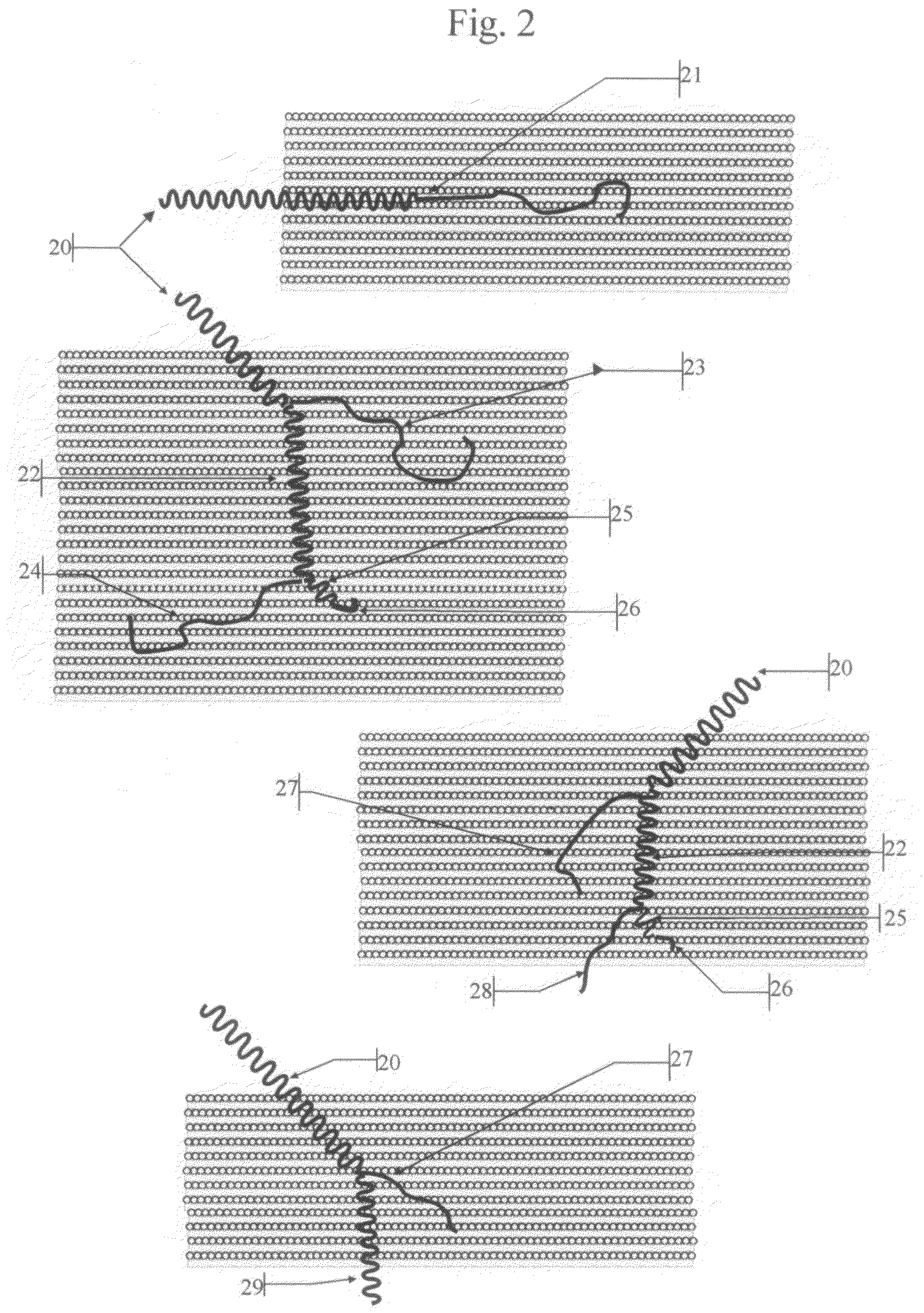Radiation cameras
a technology of ionizing radiation and camera, which is applied in the direction of radiation control devices, instruments, and tracking of radiation particles, can solve the problems of not being able to give depth information and measure the position of electrons, and achieve the effects of reducing the number of detectors, increasing the solid angle, and improving the quality of imaging
- Summary
- Abstract
- Description
- Claims
- Application Information
AI Technical Summary
Benefits of technology
Problems solved by technology
Method used
Image
Examples
Embodiment Construction
[0250]FIG. 1 illustrates a composite 3D Matrix of scintillation fibers composed of three orthogonal interlaced 3D arrays 1 of fibers separated by air or aerogel 2. A photoelectron 3 knocked-off by an incoming gamma ray would in its way traverse all three mutually orthogonal arrays and any 3 consecutive points of interaction with the Matrix would in general have coordinates (Xi,Yj), (Yj+1,Zk) and (Zk+1,Xi+1). Thus the coordinates of the Track 4 of the photoelectron along this 3 proximate points would be well defined in 3D by [(Xi+Xi+1) / 2],[(Yj+Yj+1) / 2] and [(Zk+Zk+1) / 2]. In the case that the Track crosses only two orthogonal arrays, at the proximate points (Xi,Yj) and (Yj+1,Zk), the coordinates of the Track 4 of the photoelectron along the 2 proximate points would still be defined in 3D by [(Xi), (Yj+Yj+1) / 2 and (Zk)]. In such a matrix of scintillation fibers used to detect the direction of the photo-electron Track, it is beneficial to reduce the fiber thickness and increase the sepa...
PUM
 Login to View More
Login to View More Abstract
Description
Claims
Application Information
 Login to View More
Login to View More - R&D
- Intellectual Property
- Life Sciences
- Materials
- Tech Scout
- Unparalleled Data Quality
- Higher Quality Content
- 60% Fewer Hallucinations
Browse by: Latest US Patents, China's latest patents, Technical Efficacy Thesaurus, Application Domain, Technology Topic, Popular Technical Reports.
© 2025 PatSnap. All rights reserved.Legal|Privacy policy|Modern Slavery Act Transparency Statement|Sitemap|About US| Contact US: help@patsnap.com



